It's been a very long time since I dug into my collection of photos from the Iowa and shared some of them with you. This time, we're going to look at Iowa's ground tackle, the technical term for anchors, chains, and the like.
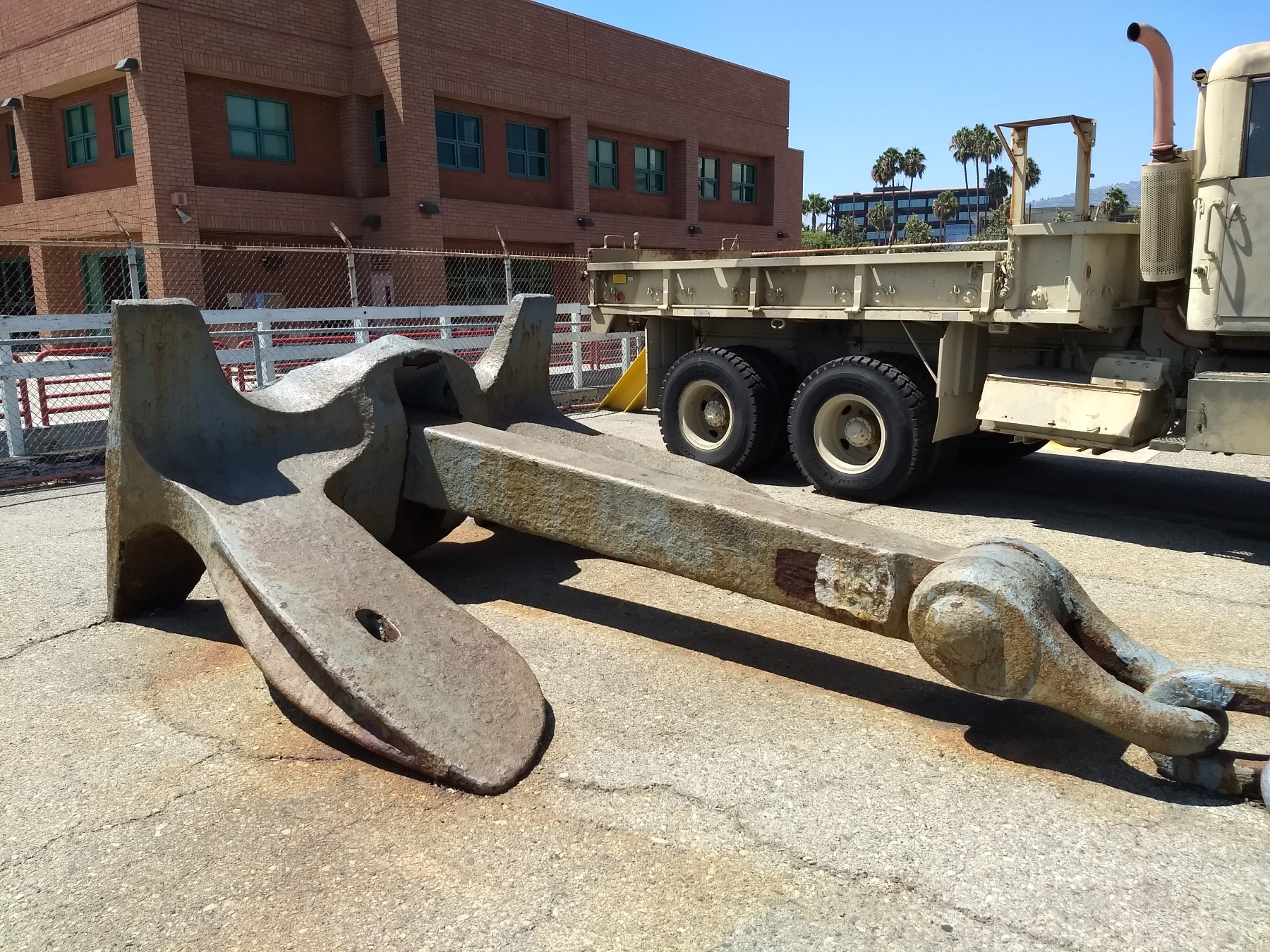
To keep her from drifting when the engines are off and she isn't tied up at a pier, Iowa is equipped with two stockless bower anchors of 30,000 lb each. The anchor is designed to dig in when pulled horizontally and free itself when pulled vertically.
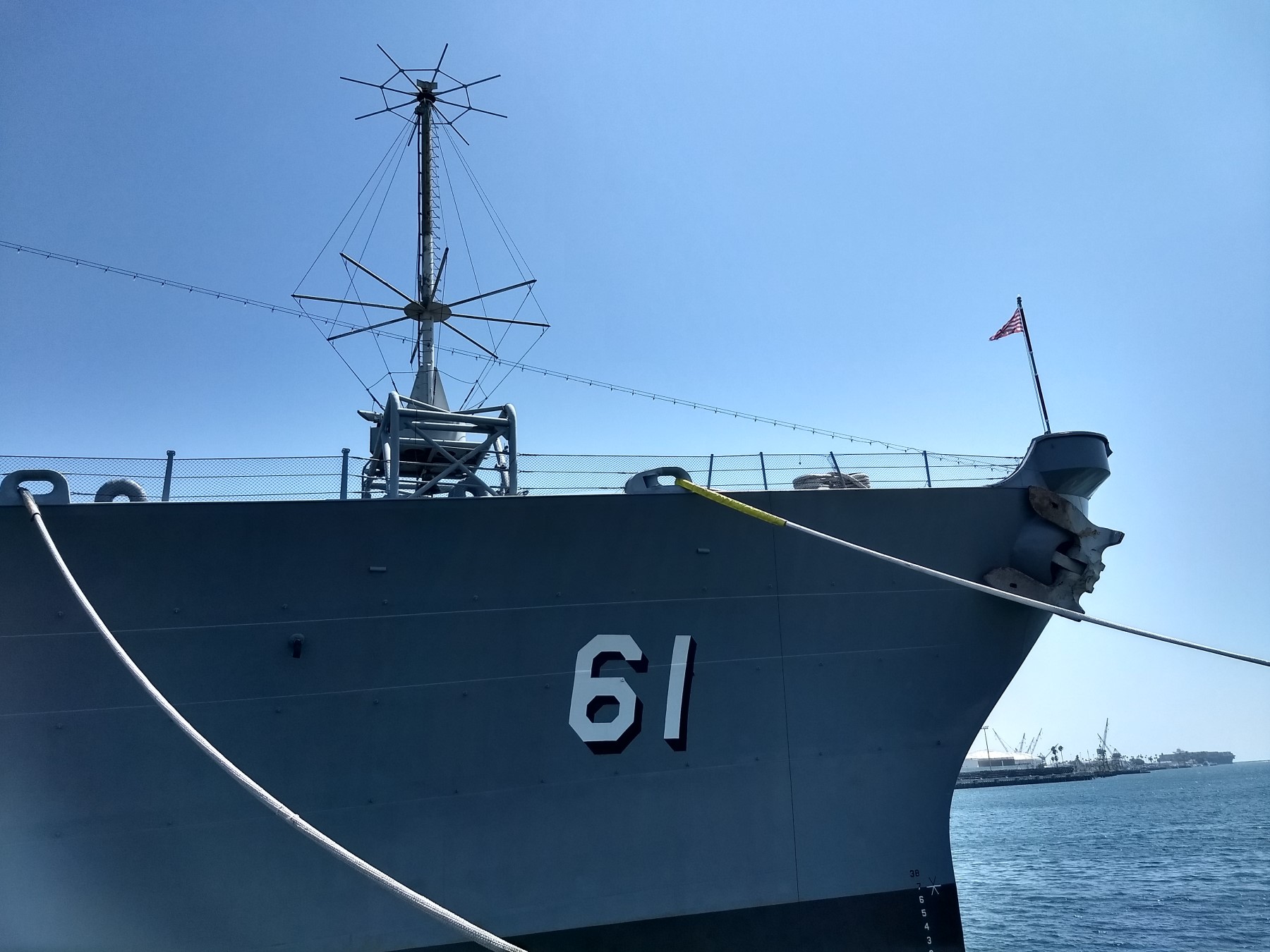
These are stored in the extreme bow, with their chains running through hawseholes, through which they can be dropped.

Each anchor is fitted with 12 90' "shots" of anchor cable, with each link of cable weighting 128 lbs. Most of the work of holding the ship stationary is done by the weight of the chain on the bottom, with the anchor serving mostly to keep it from drifting. Typically, a ship will lay out chain equal to 5-7 times the depth of the water she is anchoring in.
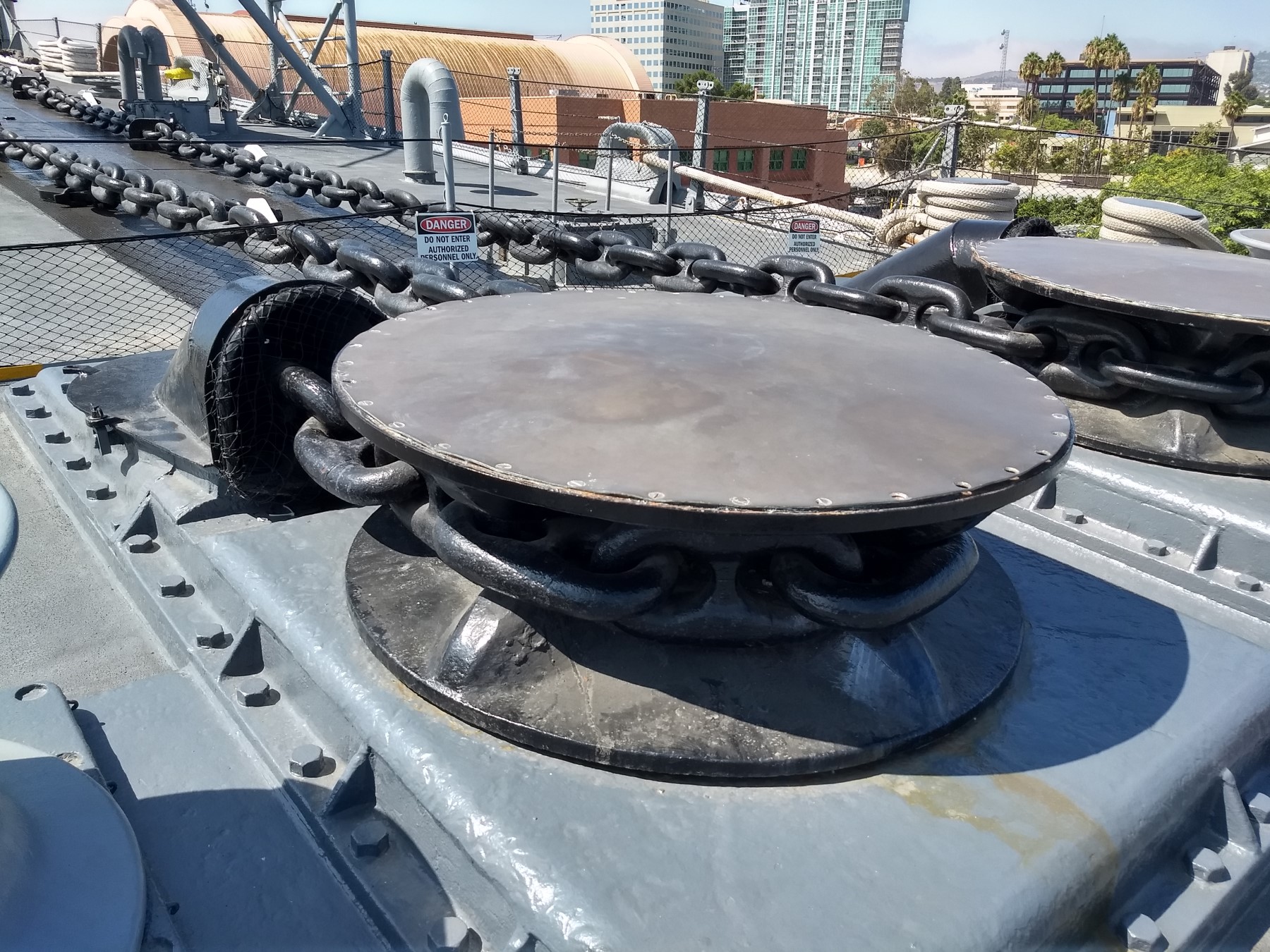
Each chain has its own windlass, a toothed wheel that can either let chain out or pull it in. The chain itself is stored in the chain locker two decks below.
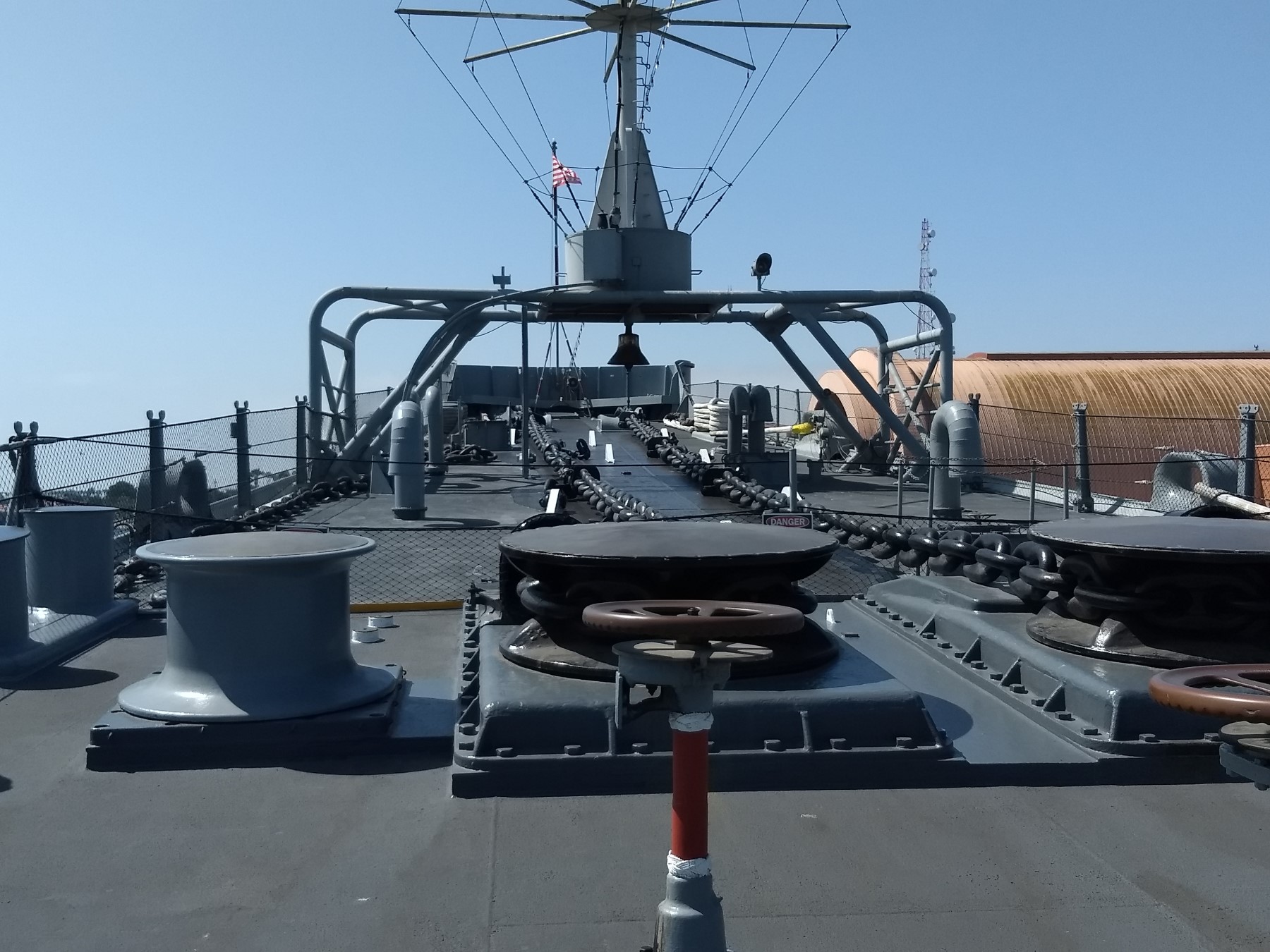
The handwheels control the windlasses and their brakes. Managing the speed which the chain runs out is important, as it is possible for the chain to "run away" faster than the brakes can stop it, in which case, it will pull out its attachment in the chain locker and come swinging across the deck, potentially killing anyone nearby, before departing the ship.
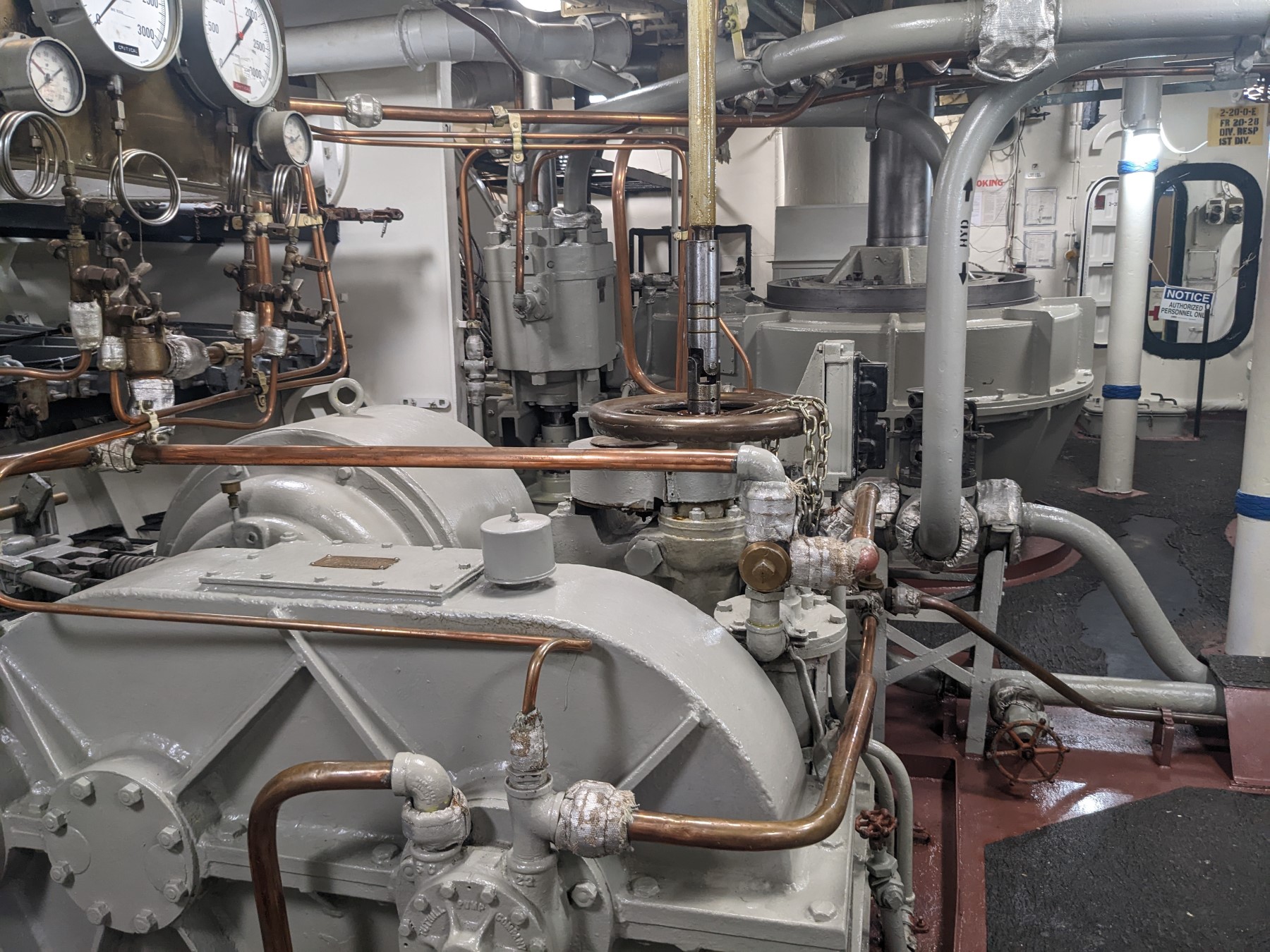
The windlass motors are in the anchor windlass room immediately below the windlasses themselves. Up until 2022, this was contaminated, and you could look in, but not enter.
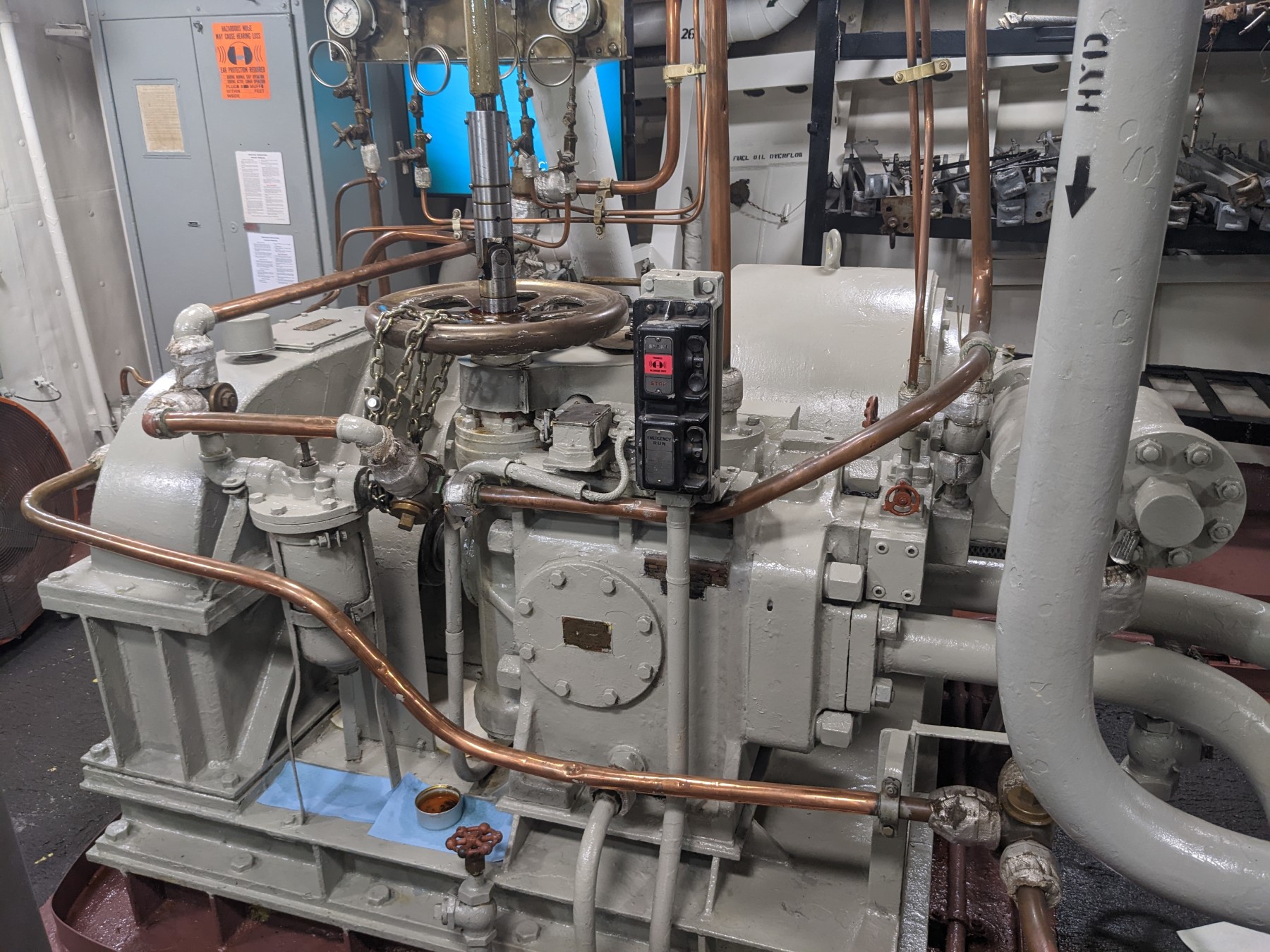
Power for the windlasses is electrohydraulic, with an electic motor powering the hydraulic pumps...
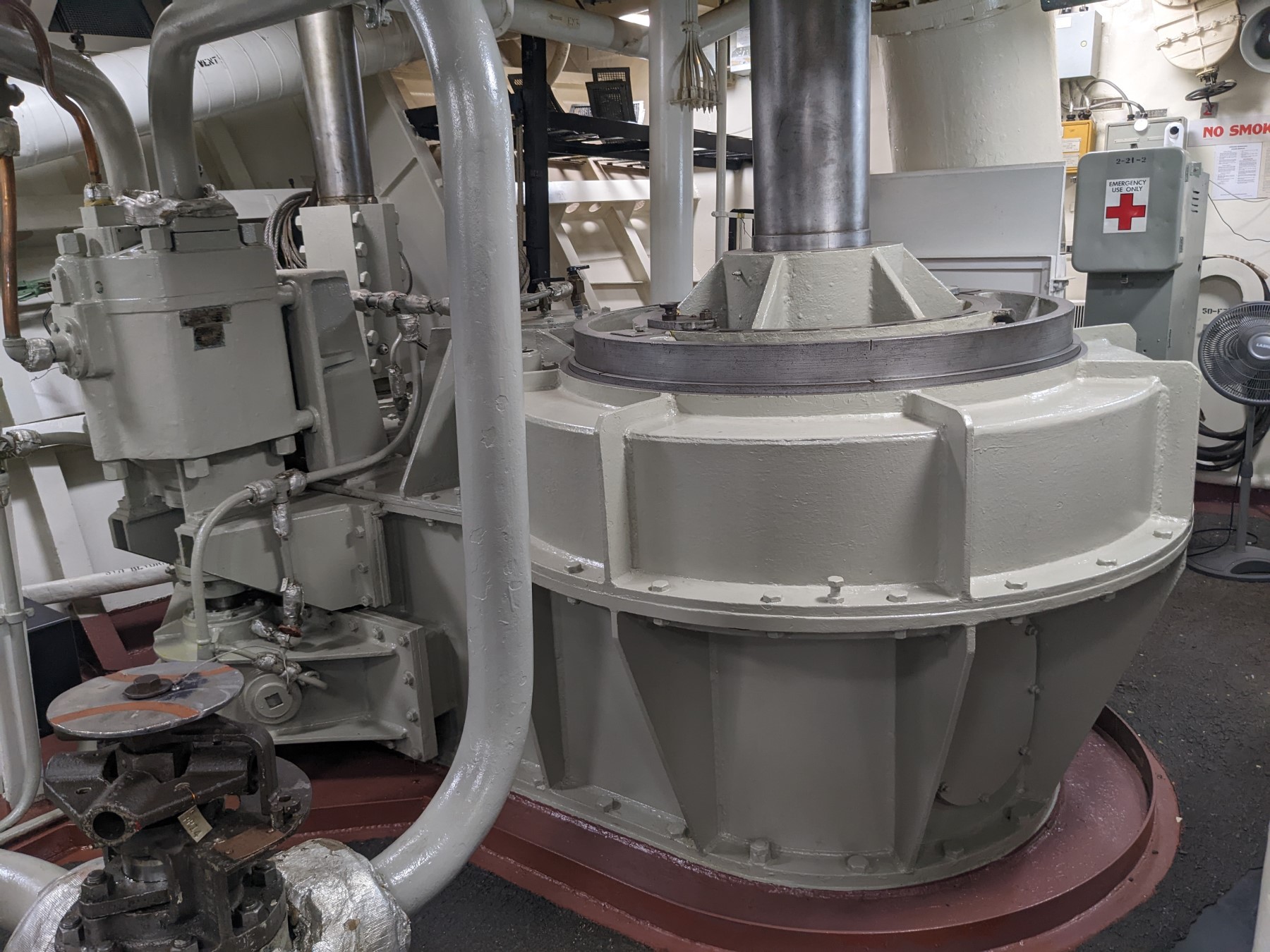
which in turn drive the big hydraulic motors which raise the anchor.
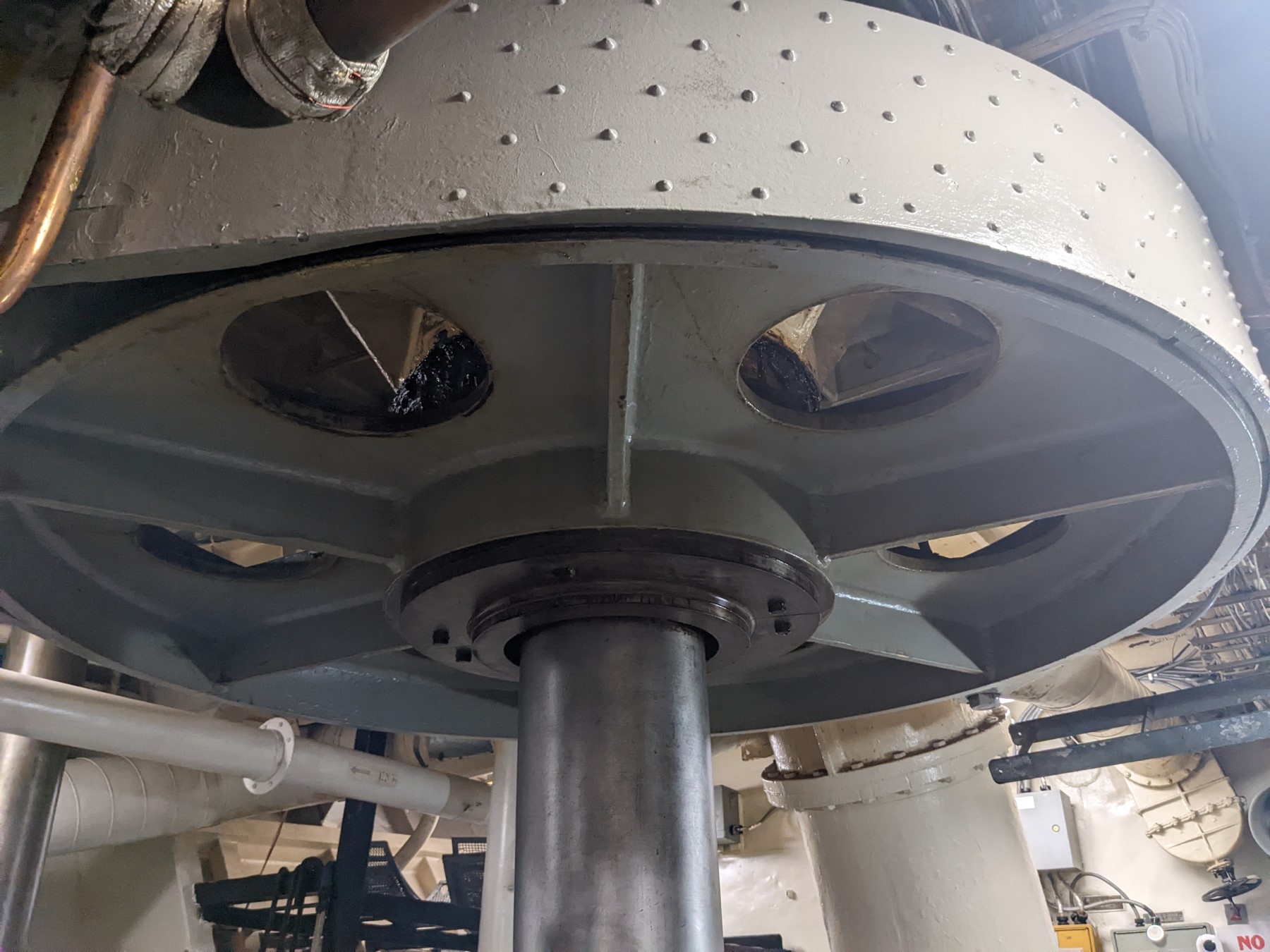
The brake band is also in this room...
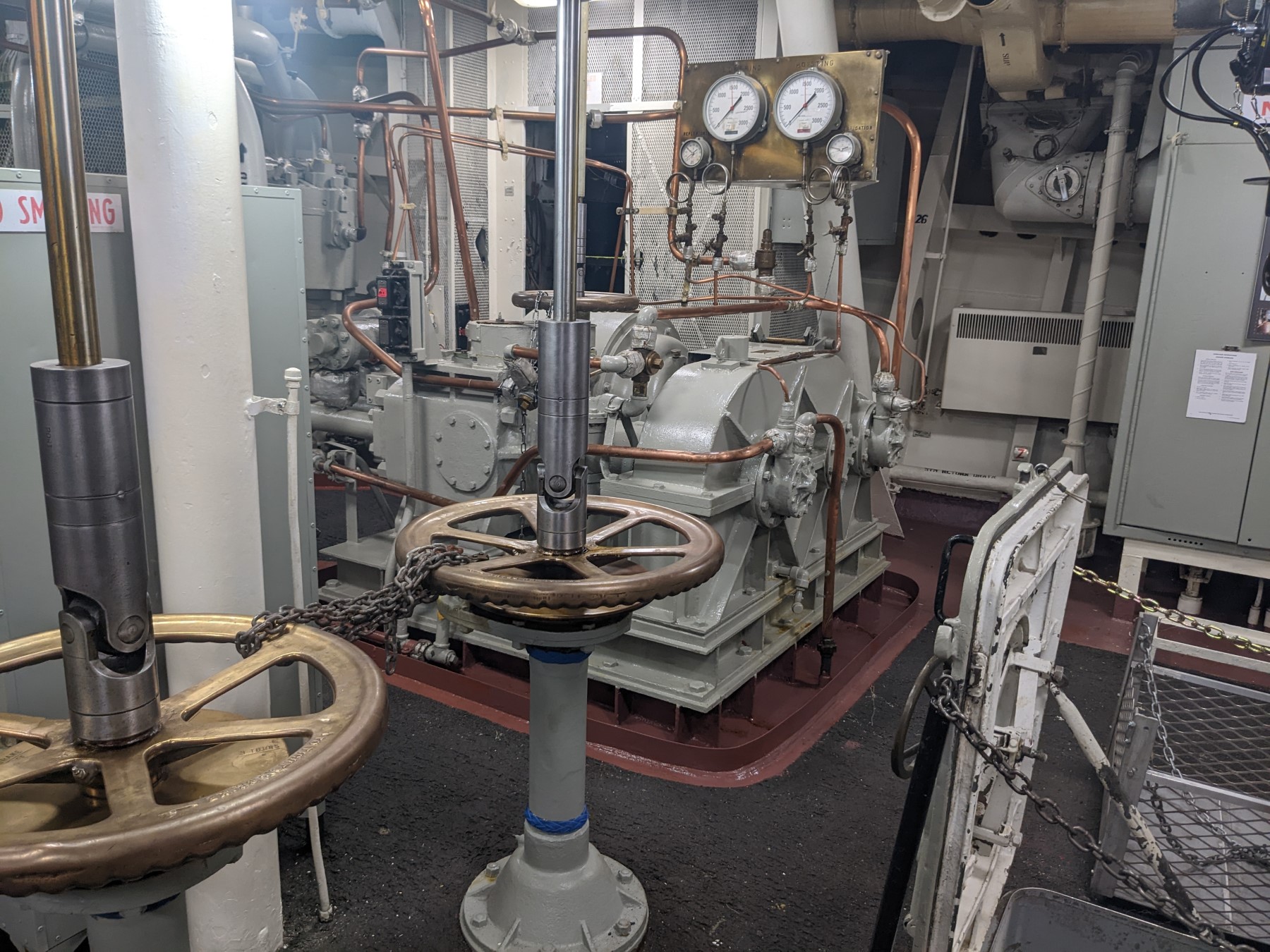
and the whole thing can be run by a second set of control wheels.

Comments
Very cool!
The videos they have on YouTube of runaway chains are quite something.
But I think you’re missing a zero on the chain weight, or otherwise have a typo. 128lbs/link seems quite low given how thick they are.
That is the number in my books. They're not all that big.
Anchor windlass room was contaminated?
With what and why?
I think it was PCBs, although I don't recall for sure. As for why, it happened in lots of places on the ship. Same reason we didn't open a turret until 2021.
Were the anchors actually used much? I would have (naively?) guessed that a battleship would mostly tie up pierside.
Coming alongside is definitely preferred, but there are definitely times you need to anchor. Maybe pier space is full, or there isn't any (see Ulithi), or you just need to stay in an area for a little while and don't want to go through the mess of coming alongside.
With all the efforts to control increasing topside weight, I wonder if anyone ever suggested ditching one anchor & chain, or replacing it with aluminum or something silly.
Really enjoyed this Bean. Thank you!
@Bernd: given that they need to be heavy to work, and that the apparent weight in water is what counts for that, using a less dense material might require them to be heavier. They did put the chain locker (= most of the weight) near the bottom of the ship. 2 anchors + 2 ~1000-link chains = ~150 tons, on a ~50,000 ton ship.
What muddywaters said. Weight is a major active ingredient in ground tackle for big ships (there are anchors for smaller vessels that work differently, but IIRC those are mostly postwar developments and have never seen wide service on warships) so trying to reduce weight is rather silly. I'm slightly amazed that nobody ever declared one of their anchors to be for peacetime use only under the WNT, but as far as I know, that didn't happen.
Another possible contamination source is asbestos. Many brake liners for anchors had asbestos. Even relatively younger ships, I recall seeing "Caution: Asbestos" on anchor brakes on CGN-37 and CVN-65.
Is there a specific sailor who has personal responsibility for handling the anchor? If there is, is he called the "anchorman?'